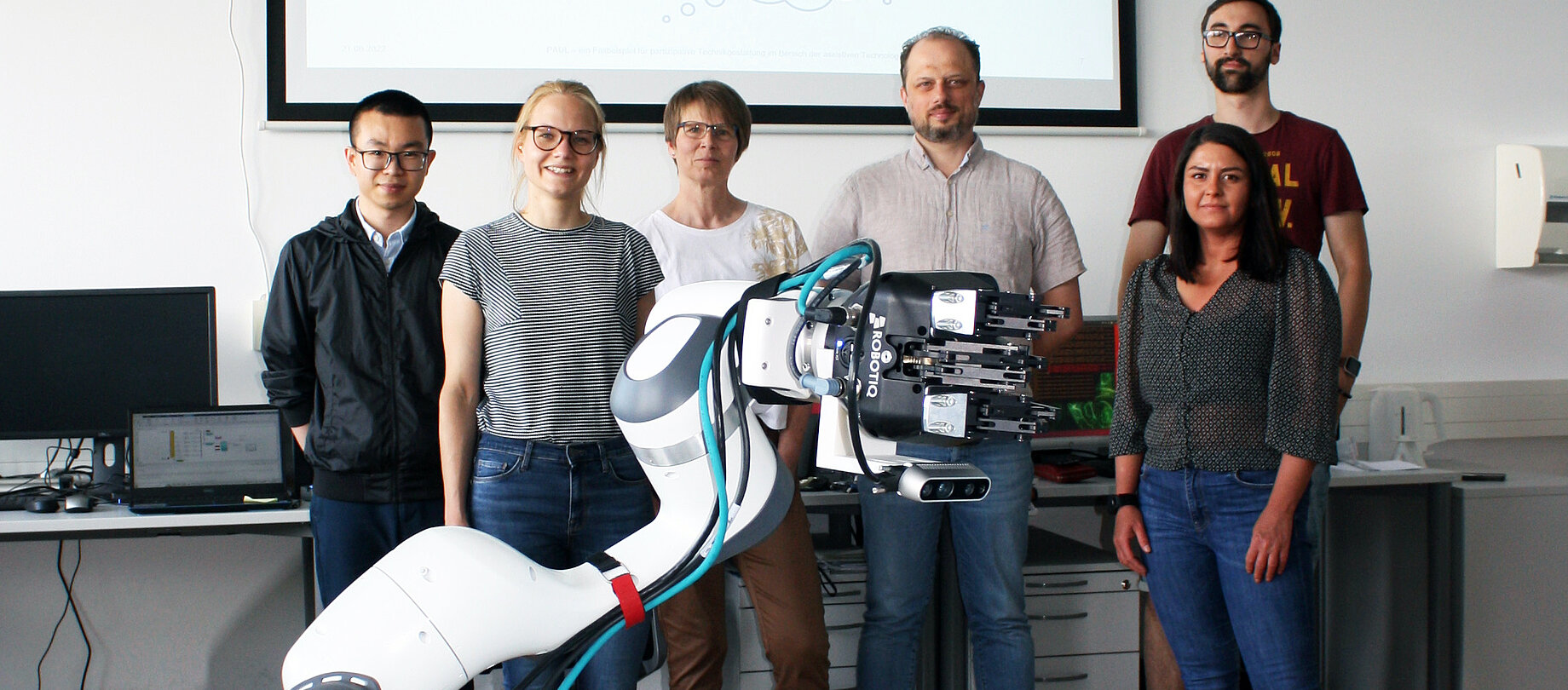
Assistive technologies and PAUL
The Institute of Electrical Engineering at Ostfalia presents its new project PAUL, the research officer Dagmar Meyer talks about assistive technologies and gives an overview of the main focus of the work. In addition, a meeting took place in which researchers from the Institute of Electrical Engineering and the ScienceCampus exchanged ideas on methodology and discussed participatory processes using specific examples.
Assistive Technologies and PAUL
The Institute of Electrical Engineering conducts research into assistive technologies. This work, by the laboratory for assistive technologies at the Ostfalia University of Applied Sciences in Wolfenbüttel, investigates technical possibilities that can support people with physical impairments or elderly people in their everyday lives. The project team is currently working on the PersonA-PP project, through which the PAUL (Personal Assistant, aUtonomous and mobiLe) robot has been developed. PAUL is intended to support both nursing staff and residents in care facilities. PAUL can , for example, help distribute jugs of drinks in the dining room, an activity that requires nursing staff to cover long distances. It can also pick up objects dropped by residents, for example, as retrieving such items may present problems for elderly people or people with limited mobility. PAUL can be commanded via an intelligent wristband that records voice commands and sends them to the server via WLAN. PAUL moves autonomously in an environment that it has previously learned and mapped. In a nursing home, for example, it can be available to all residents on a floor and be summoned in the same way a human helper can be.
Social participation and the ScienceCampus
"Technical feasibility vs. sensible use of technology"
"True to the motto of participation, users and stakeholders are involved in the work from the very beginning."
Participation plays an important role in research on two levels. It should promote or enable participation for groups of people who, for various reasons, are limited in their opportunities to participate. To realise this, participatory design approaches are indispensable. In this case, it is not primarily a matter of realising what is technically feasible, but of responding concretely to the needs of people who are to benefit from these very developments or who have an interest in the development. Engineers may occasionally tend towards the former approach due to their enthusiasm for technology, but this does not work in practice in this field.
Interdisciplinary exchange in the science campus
The campus facilitates exchange with academics from a wide range of disciplines in the context of the common theme of 'participation'. As a member of the Faculty of Electrical Engineering at Ostfalia, Dagmar Meyer works in a very technical environment, on what are essentially very technical topics. It is therefore particularly valuable to be able to share the views and experiences of researchers from less or even non-technically oriented fields. Interdisciplinary exchange takes place in different formats. One example is relatively informal events, an exchange of methods on participatory processes in technology design and development, in which researchers discuss their experiences in this regard in the laboratory using a specific example. Similar activities have already taken place on other topics. In addition, there are also more formal events such as the 'Campus Day', where the projects and certain topics are discussed within the campus. The 'Participation Week' last year was also enriching, involving interested people from the community. Not to forget the 'Postdigital Lunch' series, in which campus members held discussions with individual researchers and practitioners on a self-selected topic related to the campus.



